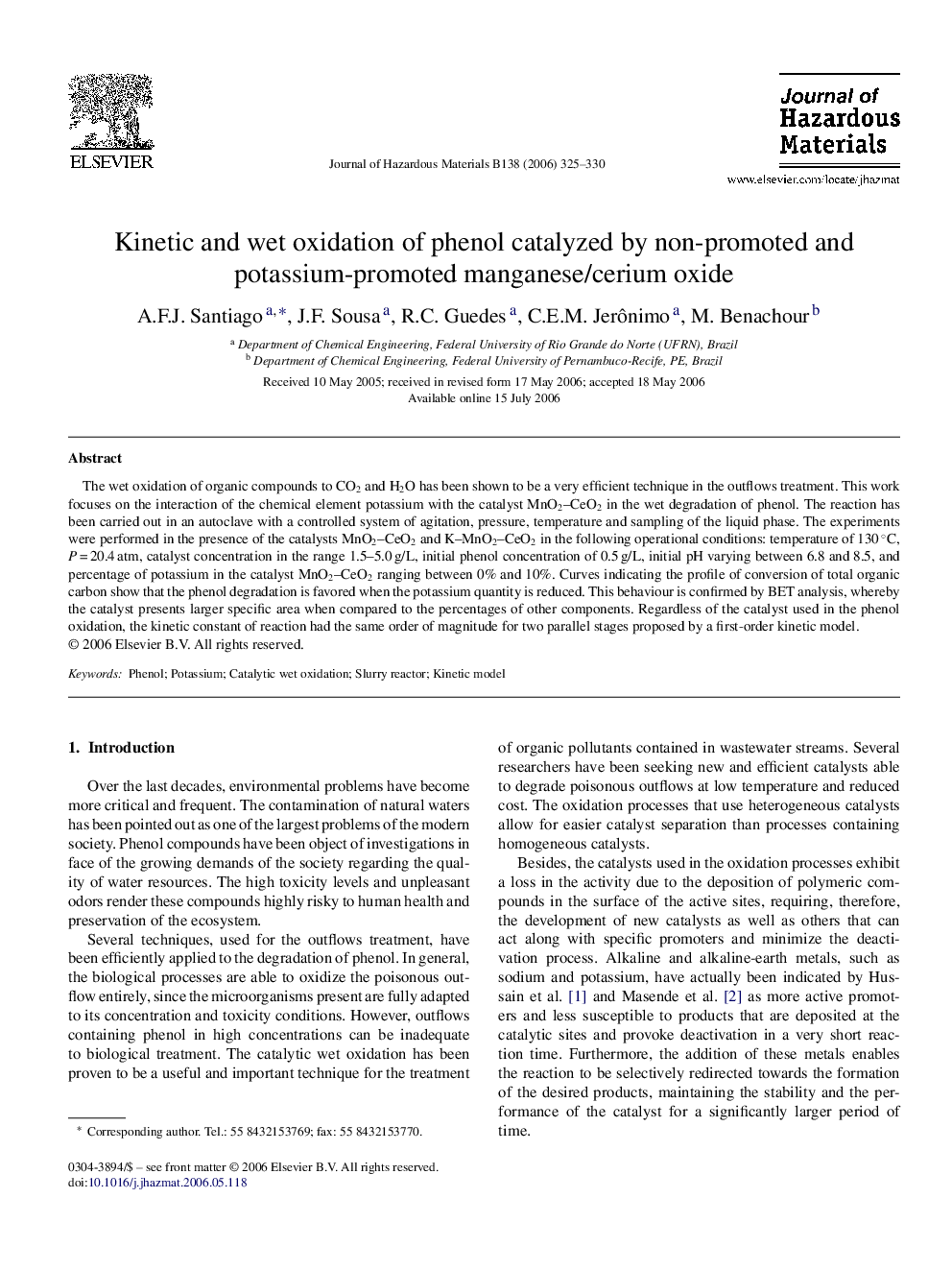| Article ID | Journal | Published Year | Pages | File Type |
|---|---|---|---|---|
| 585291 | Journal of Hazardous Materials | 2006 | 6 Pages |
Abstract
The wet oxidation of organic compounds to CO2 and H2O has been shown to be a very efficient technique in the outflows treatment. This work focuses on the interaction of the chemical element potassium with the catalyst MnO2-CeO2 in the wet degradation of phenol. The reaction has been carried out in an autoclave with a controlled system of agitation, pressure, temperature and sampling of the liquid phase. The experiments were performed in the presence of the catalysts MnO2-CeO2 and K-MnO2-CeO2 in the following operational conditions: temperature of 130 °C, P = 20.4 atm, catalyst concentration in the range 1.5-5.0 g/L, initial phenol concentration of 0.5 g/L, initial pH varying between 6.8 and 8.5, and percentage of potassium in the catalyst MnO2-CeO2 ranging between 0% and 10%. Curves indicating the profile of conversion of total organic carbon show that the phenol degradation is favored when the potassium quantity is reduced. This behaviour is confirmed by BET analysis, whereby the catalyst presents larger specific area when compared to the percentages of other components. Regardless of the catalyst used in the phenol oxidation, the kinetic constant of reaction had the same order of magnitude for two parallel stages proposed by a first-order kinetic model.
Related Topics
Physical Sciences and Engineering
Chemical Engineering
Chemical Health and Safety
Authors
A.F.J. Santiago, J.F. Sousa, R.C. Guedes, C.E.M. Jerônimo, M. Benachour,
